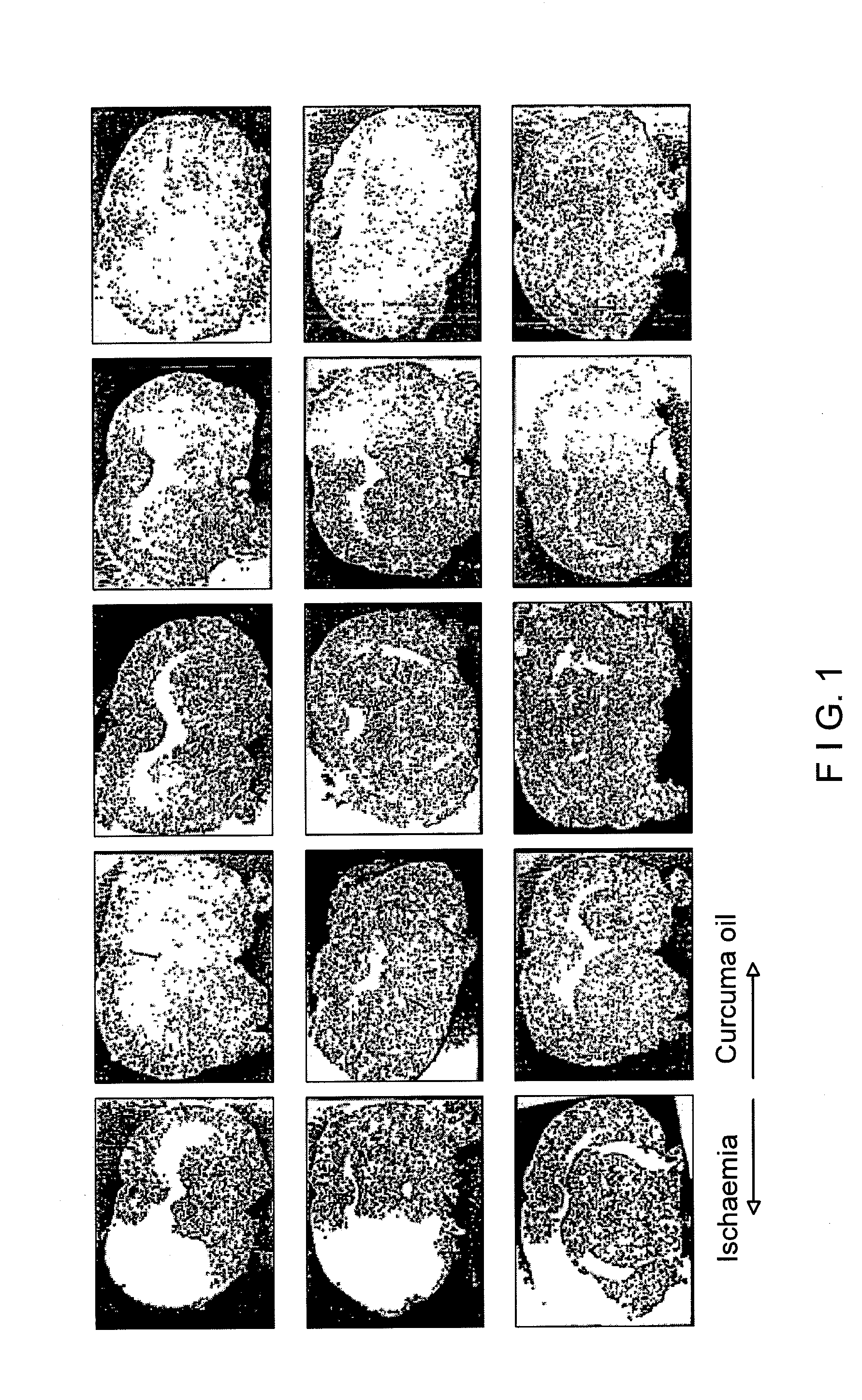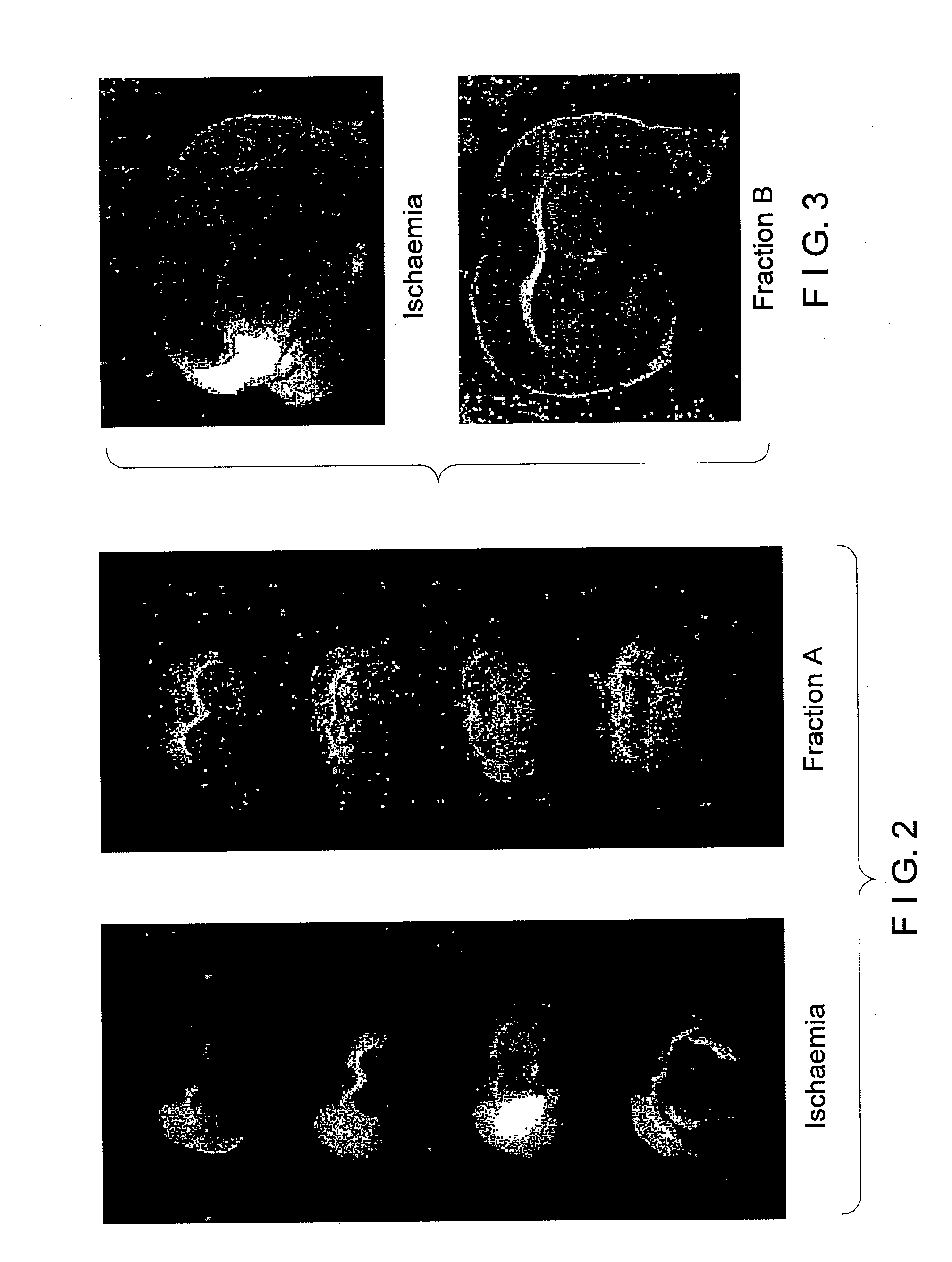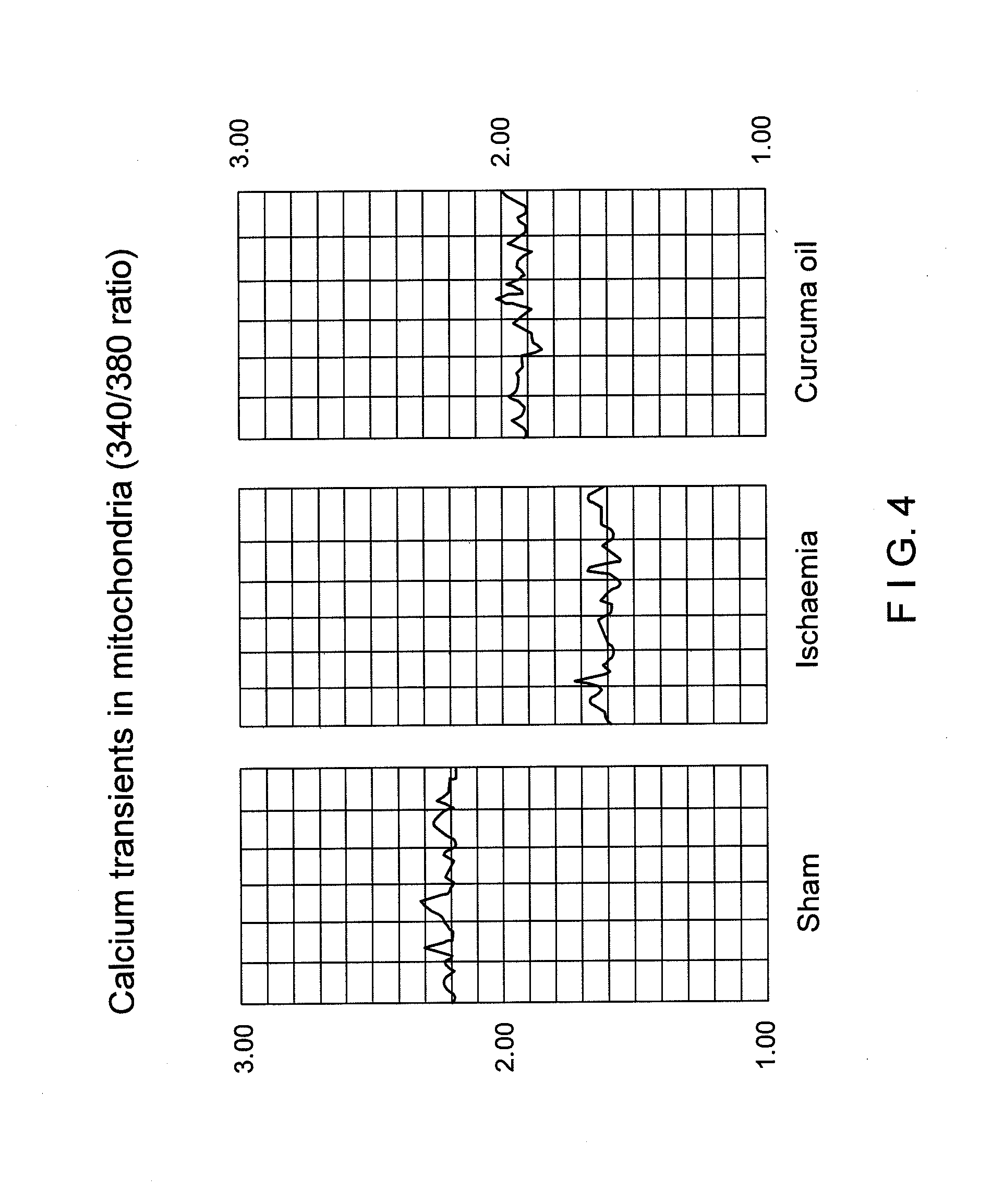Herbal medicaments for the treatment of neurocerebrovascular disorders
a neurocerebrovascular and herbal medicine technology, applied in the direction of antinoxious agents, peptide/protein ingredients, extracellular fluid disorders, etc., can solve the problems of permanent brain damage, permanent confusion and memory loss, and no satisfactory treatment is available, and achieves high yield
- Summary
- Abstract
- Description
- Claims
- Application Information
AI Technical Summary
Benefits of technology
Problems solved by technology
Method used
Image
Examples
example 1
[0212]This example describes the method of obtaining Curcuma oil and its constituents in high yields and preparation of its dosage formulations. Improved extraction procedure of Curcuma oil and its constituents from Curcuma longs L. syn. Curcuma domestica Valeton or other Curcuma species rhizomes.
[0213]The usual extractive procedure employs three or four percolations of dry powdered Curcuma rhizomes with an organic solvent like light petroleum, toluene, alcohol etc. and distillation of the solvent from the percolates. In case of alcoholic extracts, after solvent removal the residual concentrate is triturated with a non-polar organic solvent like light petroleum followed by removal of the solvent by distillation to yield Curcuma oil in 1 to 1.5 percent yields.
[0214]Hot extraction (Soxhlet) leads to loss of essential volatile constituents. When these procedures were changed to extraction of the dry powdered Curcuma rhizomes with appropriate organic solvents such as light petroleum, ac...
example 2
Focal Cerebral Ischaemia
[0220]Male Sprague Dawley rats of 270-375 gm weight from CDRI Animal House were used for this study. Rats were housed in a 12-hr. light / dark cycle and water was given ad libitum. Animals were fasted overnight and anaesthetized with pentobarbitone sodium, 30 mg / kg. Rectal temperature was monitored. Transient ischaemia / reperfusion was performed using an intravascular filament to occlude the middle cerebral artery unilaterally [Longa Z. E., Weinstein P. R., Carlson S., Cummins R.; Reversible middle cerebral artery occlusion without craniectomy in rats: Stroke, 20, 84-91 (1989)] for 2 hours followed by reperfusion for the remainder of 36 hours. Animals were assigned randomly to the following groups of n=5 rats (1) Control: Sham operated. (2.) Ischaemic / reflow—no treatment. (3.) Ischaemic / reflow—treated group: (i) Curcuma oil (weight / ml., 0.86 gm.), 683.65 mg. / kg., given i.p. and P.O. (ii). Fraction-A (weight / ml., 0.88 gm.), 569.56 mg / kg., given, i.p. and P.O. (ii...
example 3
Collagenase-Induced Intra-Cerebral Hemorrhage
[0225]Adult male rats (250-350 gm.) from the CDRI-Animal House were used in the following experiments. The rats were anaesthetized with pentobarbitone sodium (30 mg / kg, i.p.) and placed in a stereotaxic frame (for rats, Narashige, Japan). Rosenberg et. al's method [Rosenberg G. A. Mun-Bryce S., Mary B. S, and Kornfeld M., Collagenase-Induced intracerebral hemorrhage in rats: Stroke, 21, 801-807 (1990)] was followed. An incision was made in the scalp and a 23-gauge needle was implanted into the caudate nucleus and the putamen (at the coordinates of A5.8, L3.0, H1). (A stereotaxic atlas of the rat brain, eds. R. M. Elliot, Gardener Lindzey and Kenneth, MacCorquodale. Meredith Publishing Company, 1967). Rats (n=10) were injected with collagenase (0.01 IU in 2 μl of saline) and for sham with 2 μl of normal saline. After infusion, the needle was removed and the wound was sutured. The animals were allowed to recover from anesthesia, kept in a w...
PUM
| Property | Measurement | Unit |
|---|---|---|
| pressure | aaaaa | aaaaa |
| pressure | aaaaa | aaaaa |
| temperature | aaaaa | aaaaa |
Abstract
Description
Claims
Application Information
 Login to View More
Login to View More - R&D
- Intellectual Property
- Life Sciences
- Materials
- Tech Scout
- Unparalleled Data Quality
- Higher Quality Content
- 60% Fewer Hallucinations
Browse by: Latest US Patents, China's latest patents, Technical Efficacy Thesaurus, Application Domain, Technology Topic, Popular Technical Reports.
© 2025 PatSnap. All rights reserved.Legal|Privacy policy|Modern Slavery Act Transparency Statement|Sitemap|About US| Contact US: help@patsnap.com



